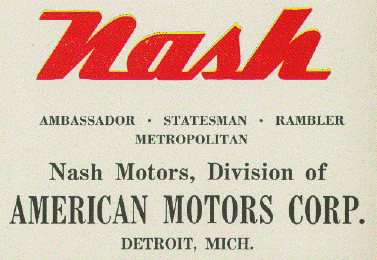

By the 1950s, the vast majority of automobiles sold in the United States were manufactured by the "Big Three" --- Ford, General Motors, and Chrysler. The smaller "independent" firms such as Nash, Hudson, Studebaker, Packard and Kaiser were having a difficult time competing against the "Big Three's" vast dealer networks and economy of scale.
Seeing the handwriting on the wall, George Mason --- who became president of Nash-Kelvinator, the strongest of the independents, in 1948 --- undertook to merge with Hudson, Studebaker, and Packard to form a fourth conglomerate. In 1954 Nash and Hudson joined together to create the American Motors Corporation, a firm which survived for more than three decades before being absorbed into the Chrysler Corporation in 1987. (The Nash and Hudson names were last used on the 1957 models.)
Sadly, George Mason died in October 1954, and Studebaker and Packard went their own way to form the Studebaker-Packard Corporation late in that same year. Their days were, alas, numbered: the last Packards were the 1958 models, and the final Studebakers appeared in 1966.
Click to learn more about: American Motors | Hudson | Studebaker | Packard
Last modified 1998 August 5